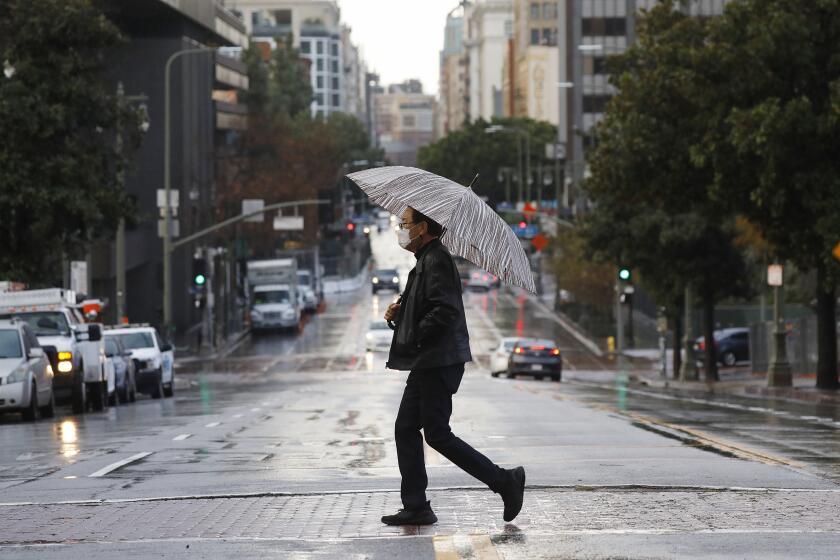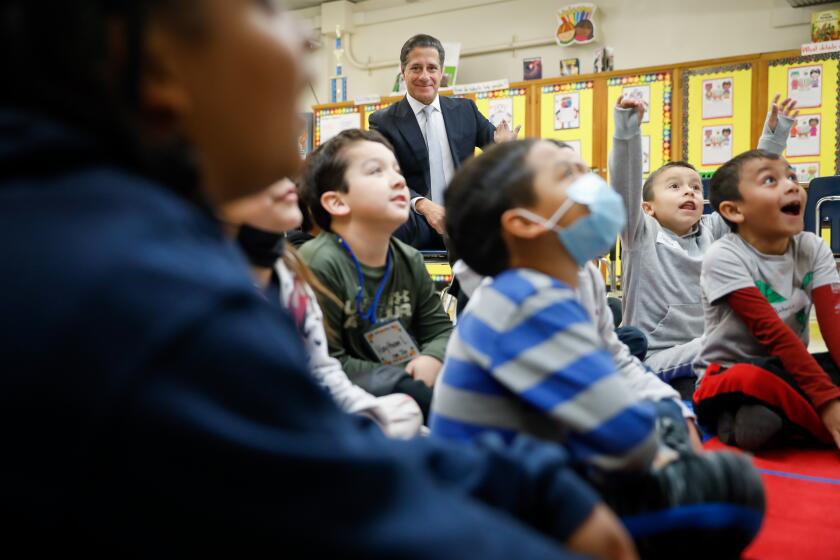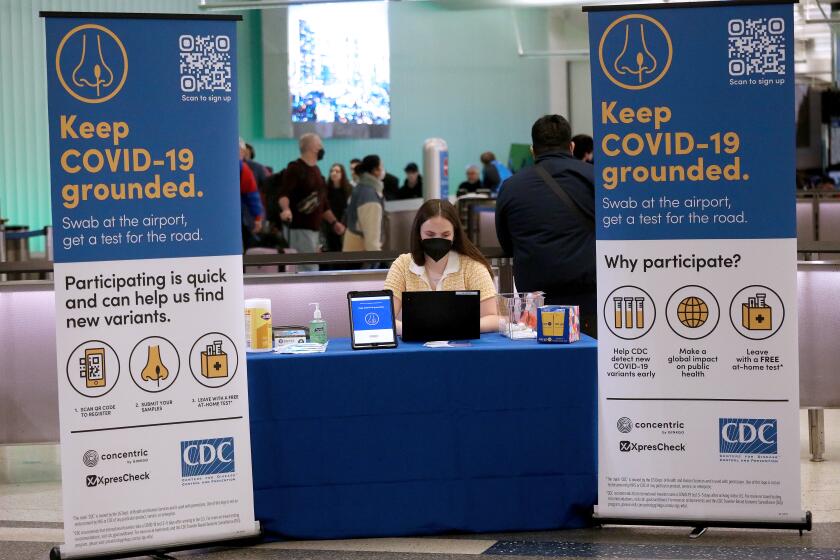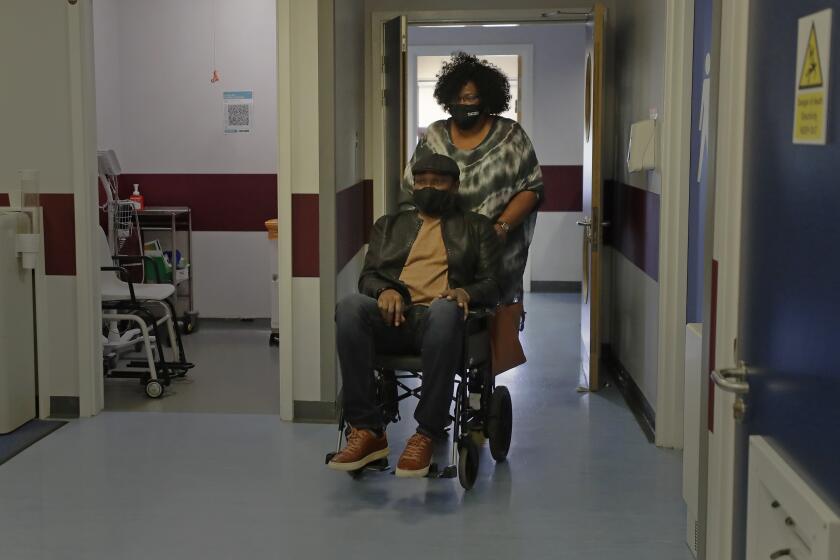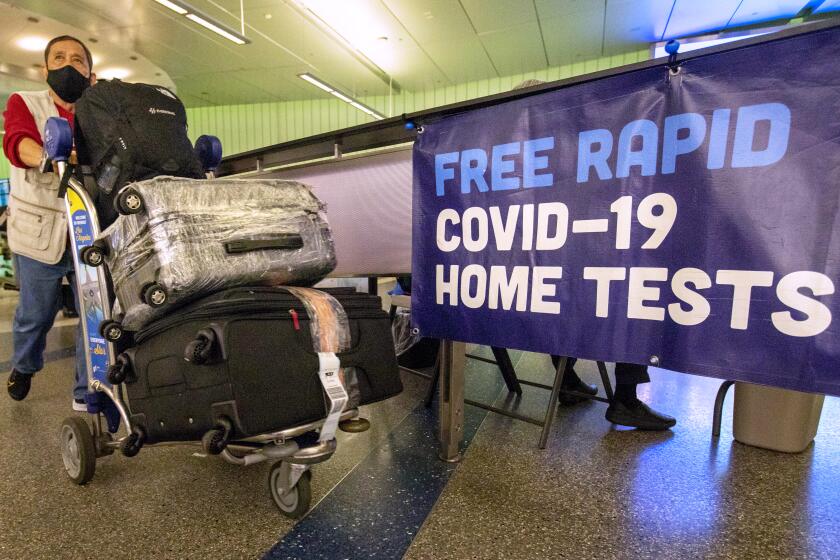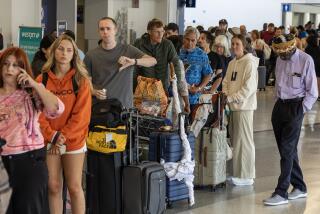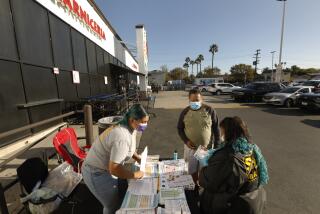A ‘very different January’: L.A. County drops to low COVID community level
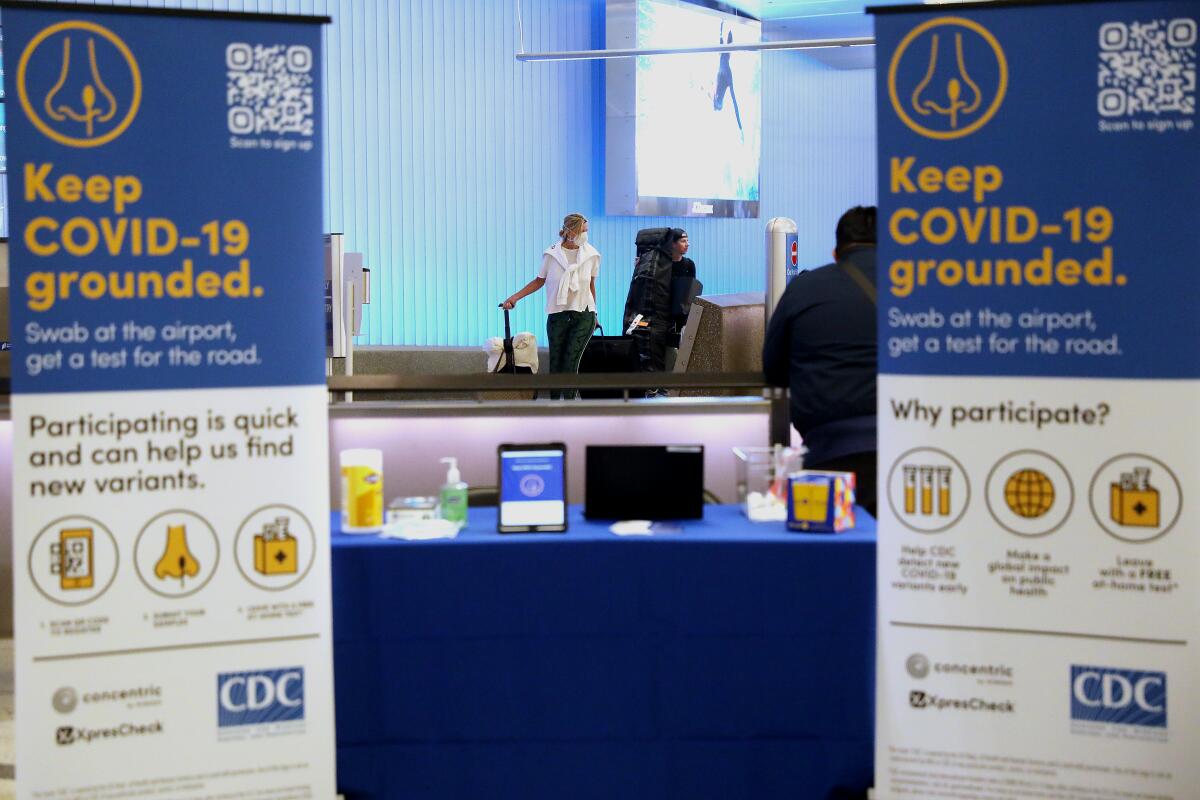
In a continuing sign of improvements in coronavirus case counts and hospitalizations, Los Angeles County on Thursday officially entered the low COVID-19 community level, indicating that the pandemic is not exerting undue stress on the local healthcare system.
Recent metrics illustrate a “very different January than expected,” a top health official said this week, with continued steady improvements in data instead of a feared post-holiday spike.
Though some figures may be affected by lags in data over the Martin Luther King Jr. holiday weekend, the county has seen marked improvement in its pandemic metrics. And with the winter holidays behind us, it’s increasingly apparent that a much-discussed double COVID wave fueled by gatherings and travel has not materialized.
“We’re not seeing the post-holiday spike that was expected by the end of the first week in January,” L.A. County Public Health Director Barbara Ferrer said Thursday.
“It could be tempting to interpret this as COVID no longer being a concern,” she said. “However, the more reasonable explanation is that the new tools and people’s behaviors have made a difference in how COVID spreads, and that even small precautions are making a difference as well.”
Using machine learning, scientists have trained computers to comb the internet and recognize the early signs of a COVID-19 surge up to 6 weeks in advance.
There are a number of possible reasons. Some people who were infected may have had mild symptoms or none at all, so they didn’t test. Others may have used an at-home kit to confirm their infection, the results of which are not always reported.
It’s also likely many residents remain well protected, either because they recently were vaccinated or recovered from a coronavirus infection.
Behavioral changes — such as moving gatherings outside, testing before events, wearing a mask in indoor public settings and doubling down on handwashing and other health hygiene efforts — also may have played a role.
L.A. County health officials urged residents returning to work or school post-holidays to mask up for at least 10 days in a bid to stunt potential spread. Ferrer has said she thinks expanded masking, even temporarily, can play a pivotal role in tamping down transmission.
However it happened, it’s apparent this sustained downturn is not merely the byproduct of data haziness.
As school resumes, COVID-traumatized L.A.-area parents call for return to masking over ‘tripledemic’ fears amid surge that also includes flu and RSV.
Even case counts have dropped. For the week that ended Thursday, L.A. County was reporting an average of 1,095 coronavirus cases a day. On a per capita basis, that’s 76 cases a week for every 100,000 residents — a rate that’s considered “substantial” but no longer “high.” It’s the first time since mid-November the case rate in L.A. County has dropped from the “high” rate.
The case rate has fallen 41% from the prior week, although it’s likely some of that dramatic decline is due to delayed reporting over the MLK weekend.
“We have a very different January than expected,” Ferrer said. “And for that, I’m grateful.”
Moving into the low community level, as defined by the U.S. Centers for Disease Control and Prevention “is significant, and it reflects reduced risk,” she continued, “but it doesn’t mean no risk.” The low COVID-19 community level indicates that the burden of the pandemic on hospitals is relatively mild.
“My biggest fear is that within this optimism people who are most vulnerable, those who have been seriously impacted the most by the pandemic, will be left to fend for themselves,” she said.
L.A. County was one of 14 California counties to transition into the low COVID-19 community level Thursday. In Southern California, Ventura County made the same transition, and elsewhere were Alameda, Contra Costa, Fresno, Kern, Sonoma, Marin, Butte, Madera, Kings, Humboldt, Tehama and Glenn counties.
Elsewhere in Southern California, San Diego, Orange and Imperial counties remained in the medium level, while Riverside, San Bernardino, Santa Barbara and San Luis Obispo counties remained in the low COVID-19 community level.
With this week’s update, 71% of Californians now live in counties with a low COVID-19 community level. For the prior week, 28% of Californians did so.
The number of coronavirus-positive patients hospitalized statewide has plummeted since the year began. As of Wednesday, 3,372 such patients were hospitalized statewide, the lowest since late November and a 26% decrease from two weeks ago. Figures include both those admitted specifically for COVID-19 and those who test positive incidentally after seeking care for another reason.
The peak number of coronavirus-positive hospitalizations this winter was 4,648 on Jan. 3. That’s a little less than the summer peak of 4,843, set July 26.
If there’s no significant resurgence of COVID-19 later this winter, it will be the first time since the pandemic began that a fall-and-winter wave was less severe than the preceding summer’s, in terms of hospitalizations.
The distressing development comes even as other metrics show a relatively promising picture, including a decrease in case counts.
Modeling from the California Department of Public Health also estimates that the spread of COVID-19 is likely decreasing statewide and has been trending downward or stable for the past month.
L.A. County mirrors the statewide trends. The 918 coronavirus-positive patients hospitalized as of Wednesday is down 29% from two weeks ago.
The county’s fall-and-winter hospitalization peak came Dec. 8, when 1,308 coronavirus-positive patients were in the hospital. That was also slightly less than the summer peak of 1,329.
Still, the numbers are not insignificant.
“While the impact of COVID on the healthcare system remains manageable and stable, our hospital admission numbers are still about double what was seen in October and early November,” Ferrer said.
Deaths also remain a concern. As of Jan. 10, California was reporting 355 COVID-19 deaths per week. While that has increased lately, it remains below the summer peak of 396 and it’s far below last winter’s peak, when 1,827 deaths were recorded for the week ending Feb. 27. Last winter, the first season following the arrival of the Omicron variant, marked California’s second-deadliest wave.
L.A. County reported 140 COVID-19 deaths for the week ending Thursday, down from a seasonal peak of 164 for the seven-day period that ended Jan. 13. It’s unclear whether that decline is due to a reporting lag over the MLK weekend.
Mild cases of COVID-19 can cause patients to suffer long COVID symptoms, and a new study finds that some of those symptoms can linger for more than a year.
Nationally, COVID-19 is responsible for far many more deaths than flu. The CDC has reported more than 39,000 COVID-19 deaths since the start of October, more than double the estimated 16,000 from flu.
Despite recent downturns in injections, officials are still urging residents to get the updated COVID-19 booster.
Uptake of those bivalent shots has been relatively slow. Just under 16% of eligible Americans have gotten theirs, federal data show. A larger, but still light 23% of Californians have done likewise.
According to state data compiled by The Times, California saw a momentary surge in vaccine administration in mid-September — when the updated boosters became available — that continued for about two months. But the number of new doses going into arms has dwindled since.
This could be because some vaccination sites were closed over the holidays. But it also could point to general public indifference.
The latest Omicron subvariant, perhaps the most infectious yet, has gained a foothold in California. Officials say its growth advantage is worrisome.
An online survey of 1,200 previously vaccinated Americans — the results of which were published Thursday by the CDC — found that the most common reasons individuals cited for not getting the updated booster were that they were not aware the shots were available or that they were eligible to get them; or they believed they were still well-protected from infection or severe disease. Others cited uncertainty about the booster’s effectiveness or concerns about possible side effects.
“A bivalent booster can provide protection for yourself, and it reduces the chances of serious illness from COVID-19,” Ferrer said. “This is especially important for those in our community who are older or have underlying conditions.”
More to Read
Sign up for Essential California
The most important California stories and recommendations in your inbox every morning.
You may occasionally receive promotional content from the Los Angeles Times.
